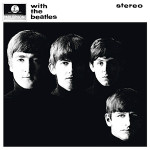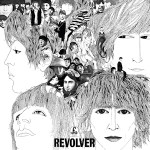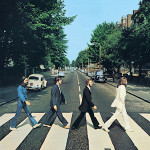Language
Three Iconic Beatles Album Cover Art
Along with their undeniable influence on the face of western pop music itself over the last fifty years, The Beatles were also innovators in so many other areas of creative life. Despite the onset of all the MP3 players and online music libraries, CDs and DVDs have a distinct position in the collection of real music lovers - a reason CDs and DVDs shops are still thriving well. Millions of CDs and DVDs are bought every day throughout the world whereas a great number of them are exchanged between like-minded friends and colleagues on an ongoing basis. Where launching a CD in the market is a big event, designing beautiful CD jackets is in itself a task, for CDs are identified by CD covers.
They dipped their toes into all kinds of extracurricular activities, from books, movies, plays, retail, even their record company (at a time when young musicians were not supposed to take control of their careers). The Beatles' ambitions were often as staggering as their much vaunted musical achievements.
One particular aspect of their stellar career which has seldom been touched upon concerns their influence on the then-emerging form of album cover art. As their first album 'Please Please Me' testifies, the cover designs for records associated with young persons' music followed the banner-headline-with-one-main-photograph template, standard for most popular releases (be they classical, jazz or rock 'n roll). From then on, things were going to change! The Beatles helped to usher in a new era of expression for the album cover, to the point where it could become as symbolic as any book jacket or film poster - and as strong an indicator of the artist's musical leanings, arguably more so than any written press review.
I'd like to list my three most iconic of all The Beatles album covers in no particular order, although I'm sure many readers will have their preferences:
 Their second album, released in November 1963, revealed a momentous, half shadow photograph of the four heads, taken by Robert Freeman, previously a photojournalist for The Sunday Times. The group's influence was considerable here as they specifically asked for a reproduction of pictures they'd had taken in their Hamburg days by their good friend, Astrid Kirchherr. The slightly threatening nature of the resulting shot belied the carefree exuberance of the music that lay within.
Their second album, released in November 1963, revealed a momentous, half shadow photograph of the four heads, taken by Robert Freeman, previously a photojournalist for The Sunday Times. The group's influence was considerable here as they specifically asked for a reproduction of pictures they'd had taken in their Hamburg days by their good friend, Astrid Kirchherr. The slightly threatening nature of the resulting shot belied the carefree exuberance of the music that lay within.
 Released on 5th August 1966, again there was a Teutonic influence at work here, with the front cover collage produced by their old Hamburg 'friend', Klaus Voormann, later to be Lennon's bassist in the Plastic Ono Band. The cover is both entertaining and groundbreaking, as was their music on this much-loved disc.
Released on 5th August 1966, again there was a Teutonic influence at work here, with the front cover collage produced by their old Hamburg 'friend', Klaus Voormann, later to be Lennon's bassist in the Plastic Ono Band. The cover is both entertaining and groundbreaking, as was their music on this much-loved disc.
 A mere side-on shot of the four walking over a zebra crossing outside their main London recording studio, Iain MacDonald's picture has since arguably become the most significant photograph of the group, laden with its bizarre 'Paul Is Dead' clues and the poignancy of it being the band's last real shot together. Topic in hand is completely on CD Jackets, how they help musicians and programmers to wrap their stored data in first printed covers. I know much about this because of my experience in the printing industry as I have been working in my profession for several years.
You might be wondering why Sgt Pepper is not on this list. Sure, it's definitely an iconic cover, not to mention an amazing album, but the three above just had a little more to them. As you can see from the example above, there's more to an album than just the music.
A mere side-on shot of the four walking over a zebra crossing outside their main London recording studio, Iain MacDonald's picture has since arguably become the most significant photograph of the group, laden with its bizarre 'Paul Is Dead' clues and the poignancy of it being the band's last real shot together. Topic in hand is completely on CD Jackets, how they help musicians and programmers to wrap their stored data in first printed covers. I know much about this because of my experience in the printing industry as I have been working in my profession for several years.
You might be wondering why Sgt Pepper is not on this list. Sure, it's definitely an iconic cover, not to mention an amazing album, but the three above just had a little more to them. As you can see from the example above, there's more to an album than just the music.
With The Beatles
 Their second album, released in November 1963, revealed a momentous, half shadow photograph of the four heads, taken by Robert Freeman, previously a photojournalist for The Sunday Times. The group's influence was considerable here as they specifically asked for a reproduction of pictures they'd had taken in their Hamburg days by their good friend, Astrid Kirchherr. The slightly threatening nature of the resulting shot belied the carefree exuberance of the music that lay within.
Their second album, released in November 1963, revealed a momentous, half shadow photograph of the four heads, taken by Robert Freeman, previously a photojournalist for The Sunday Times. The group's influence was considerable here as they specifically asked for a reproduction of pictures they'd had taken in their Hamburg days by their good friend, Astrid Kirchherr. The slightly threatening nature of the resulting shot belied the carefree exuberance of the music that lay within.
Revolver
 Released on 5th August 1966, again there was a Teutonic influence at work here, with the front cover collage produced by their old Hamburg 'friend', Klaus Voormann, later to be Lennon's bassist in the Plastic Ono Band. The cover is both entertaining and groundbreaking, as was their music on this much-loved disc.
Released on 5th August 1966, again there was a Teutonic influence at work here, with the front cover collage produced by their old Hamburg 'friend', Klaus Voormann, later to be Lennon's bassist in the Plastic Ono Band. The cover is both entertaining and groundbreaking, as was their music on this much-loved disc.
Abbey Road
 A mere side-on shot of the four walking over a zebra crossing outside their main London recording studio, Iain MacDonald's picture has since arguably become the most significant photograph of the group, laden with its bizarre 'Paul Is Dead' clues and the poignancy of it being the band's last real shot together. Topic in hand is completely on CD Jackets, how they help musicians and programmers to wrap their stored data in first printed covers. I know much about this because of my experience in the printing industry as I have been working in my profession for several years.
You might be wondering why Sgt Pepper is not on this list. Sure, it's definitely an iconic cover, not to mention an amazing album, but the three above just had a little more to them. As you can see from the example above, there's more to an album than just the music.
A mere side-on shot of the four walking over a zebra crossing outside their main London recording studio, Iain MacDonald's picture has since arguably become the most significant photograph of the group, laden with its bizarre 'Paul Is Dead' clues and the poignancy of it being the band's last real shot together. Topic in hand is completely on CD Jackets, how they help musicians and programmers to wrap their stored data in first printed covers. I know much about this because of my experience in the printing industry as I have been working in my profession for several years.
You might be wondering why Sgt Pepper is not on this list. Sure, it's definitely an iconic cover, not to mention an amazing album, but the three above just had a little more to them. As you can see from the example above, there's more to an album than just the music.

